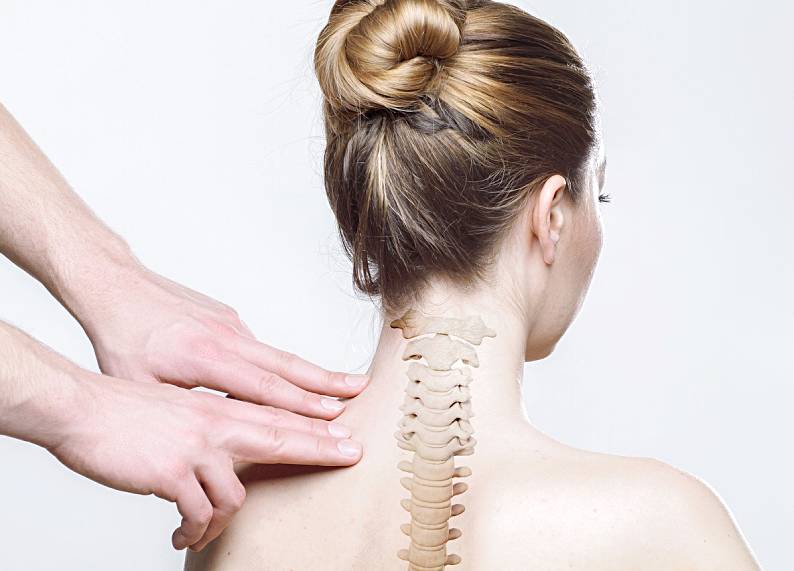words Alexa Wang
Back pain is an all-too-common ailment that affects people of all ages, and its impact on daily life can be debilitating. Whether it’s caused by poor posture, sedentary lifestyles, or underlying medical conditions, back pain can significantly reduce one’s quality of life. Fortunately, there are practical and straightforward ways to prevent and alleviate back pain, promoting a healthier spine. In this article, we will explore seven key strategies to keep your spine in top condition, allowing you to enjoy life without the burden of persistent back discomfort.
Understanding the Anatomy of the Spine
To effectively prevent back pain, it’s crucial to have a basic understanding of the spine’s anatomy. The spine, comprised of vertebrae, discs, and various ligaments, is a complex structure supporting the body’s weight and facilitating movement. The spinal column houses the spinal cord, a vital component of the central nervous system. By grasping the intricacies of the spine, individuals can make informed lifestyle choices to protect this essential part of the body.
Seeking Professional Guidance and Treatment
In cases where back pain persists or becomes severe, seeking professional guidance is crucial. A healthcare provider or a qualified physical therapist can assess the specific causes of back pain and recommend tailored exercises and treatments. Considering the complexity of spinal health, consulting professionals in spine surgery, such as Dr. Michael Wheeler, could offer valuable insights. These specialists can provide a more in-depth evaluation and suggest appropriate interventions, ensuring a comprehensive approach to managing back issues. Physical therapy, chiropractic care, and other interventions can also address underlying issues and provide relief. Avoiding self-diagnosis and relying on the expertise of healthcare professionals can prevent further complications and ensure a proper course of action.
Maintaining Proper Posture in Daily Activities
One of the primary contributors to back pain is poor posture. Whether sitting at a desk, standing, or lifting objects, maintaining proper posture is paramount. When seated, it’s essential to sit with your back straight, shoulders relaxed, and feet flat on the floor. Standing tall and avoiding slouching can also contribute to a healthier spine. Furthermore, lifting heavy objects should involve bending the knees and keeping the back straight, distributing the load evenly and minimizing the risk of injury.
Incorporating Regular Exercise into Your Routine
Engaging in regular exercise is a cornerstone of maintaining a healthy spine. Activities that strengthen the core muscles, such as yoga, Pilates, and specific abdominal exercises, can provide stability to the spine and reduce the likelihood of back pain. Additionally, aerobic exercises like walking, swimming, or cycling promote overall fitness and enhance blood circulation, contributing to a well-nourished and resilient spine.
Investing in Ergonomic Furniture and Equipment
The environments where we spend a significant portion of our time, such as offices or home workstations, play a crucial role in spinal health. Investing in ergonomic furniture and equipment can make a substantial difference. Chairs with proper lumbar support, adjustable desks, and computer monitors at eye level can help maintain good posture and reduce strain on the spine during extended periods of sitting. Making these adjustments creates an environment that supports spinal health in everyday activities.
Prioritizing Sleep and Mattress Selection
Quality sleep is vital for overall health, and it also has a direct impact on the spine. Choosing the right mattress and pillow can significantly influence spinal alignment during sleep. A mattress that is too firm or too soft may lead to discomfort and disrupt sleep patterns. Opting for a mattress that provides adequate support to the natural curves of the spine, along with a supportive pillow, can contribute to a restful and spine-friendly night’s sleep.
Managing Stress and Mental Well-being
Stress and mental well-being are interconnected with physical health, including spinal health. Chronic stress can lead to muscle tension and contribute to back pain. Techniques such as mindfulness, meditation, and relaxation exercises can help manage stress levels and promote mental well-being, ultimately benefiting the health of the spine. Incorporating stress-reducing practices into daily routines can have a positive impact on both mental and physical health.
Maintaining a healthy spine is within reach for everyone, and it requires a holistic approach that encompasses various aspects of daily life. By understanding the spine’s anatomy, practicing good posture, incorporating regular exercise, investing in ergonomic solutions, prioritizing sleep, managing stress, and seeking professional guidance when needed, individuals can significantly reduce the risk of back pain and promote a healthier, more resilient spine. Implementing these simple tips into your lifestyle not only prevents discomfort but also contributes to an overall sense of well-being, allowing you to lead a more active and fulfilling life.











